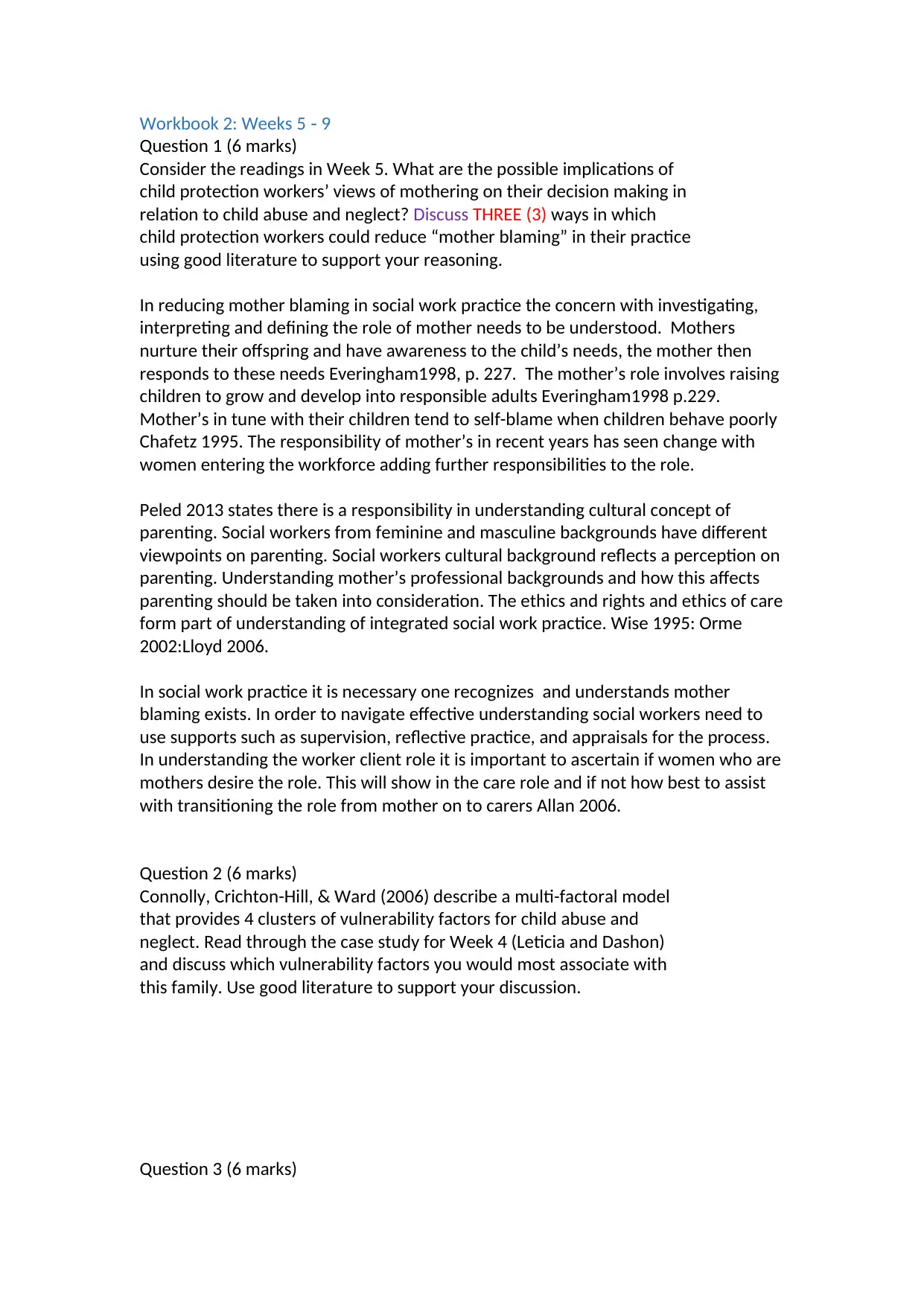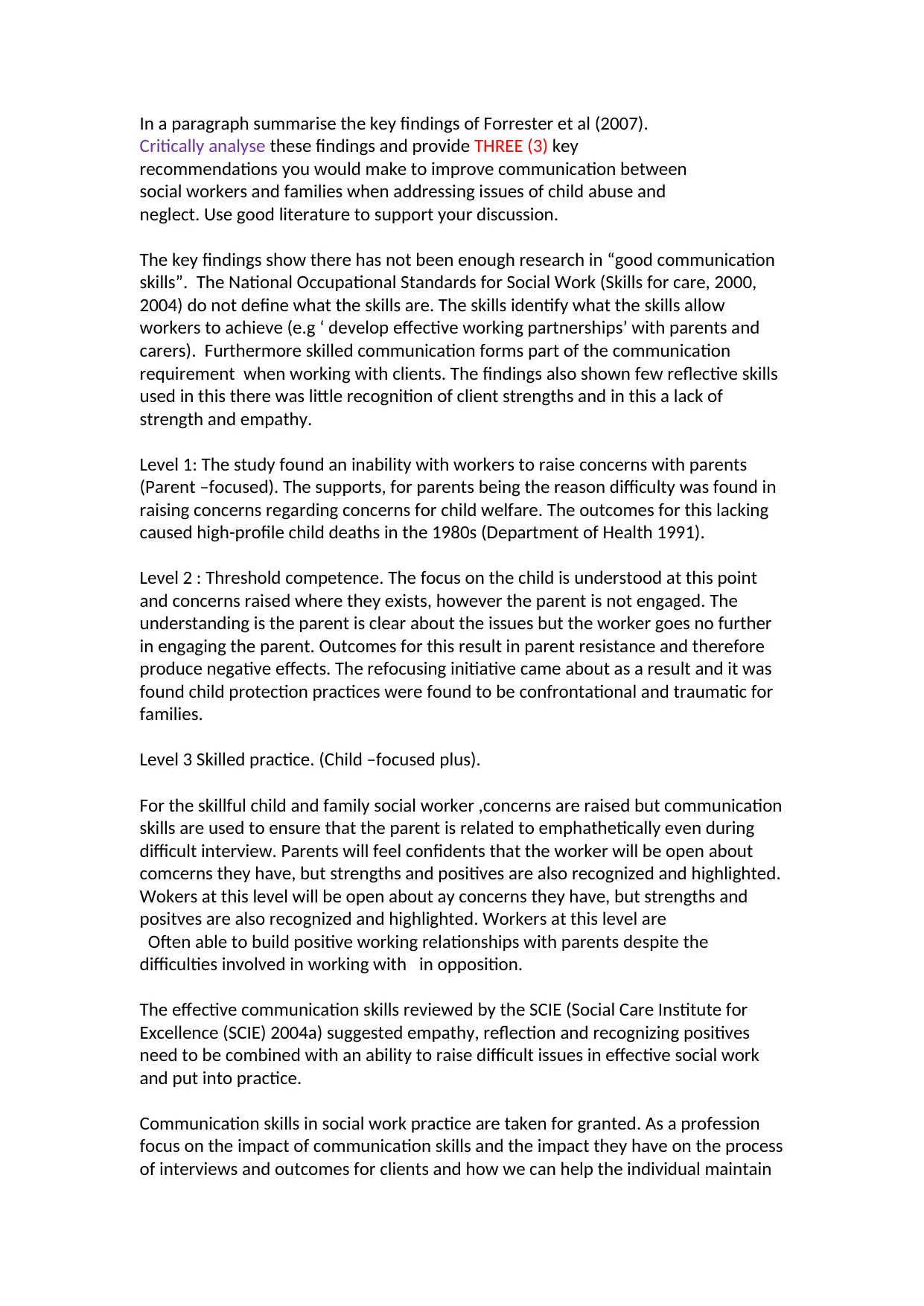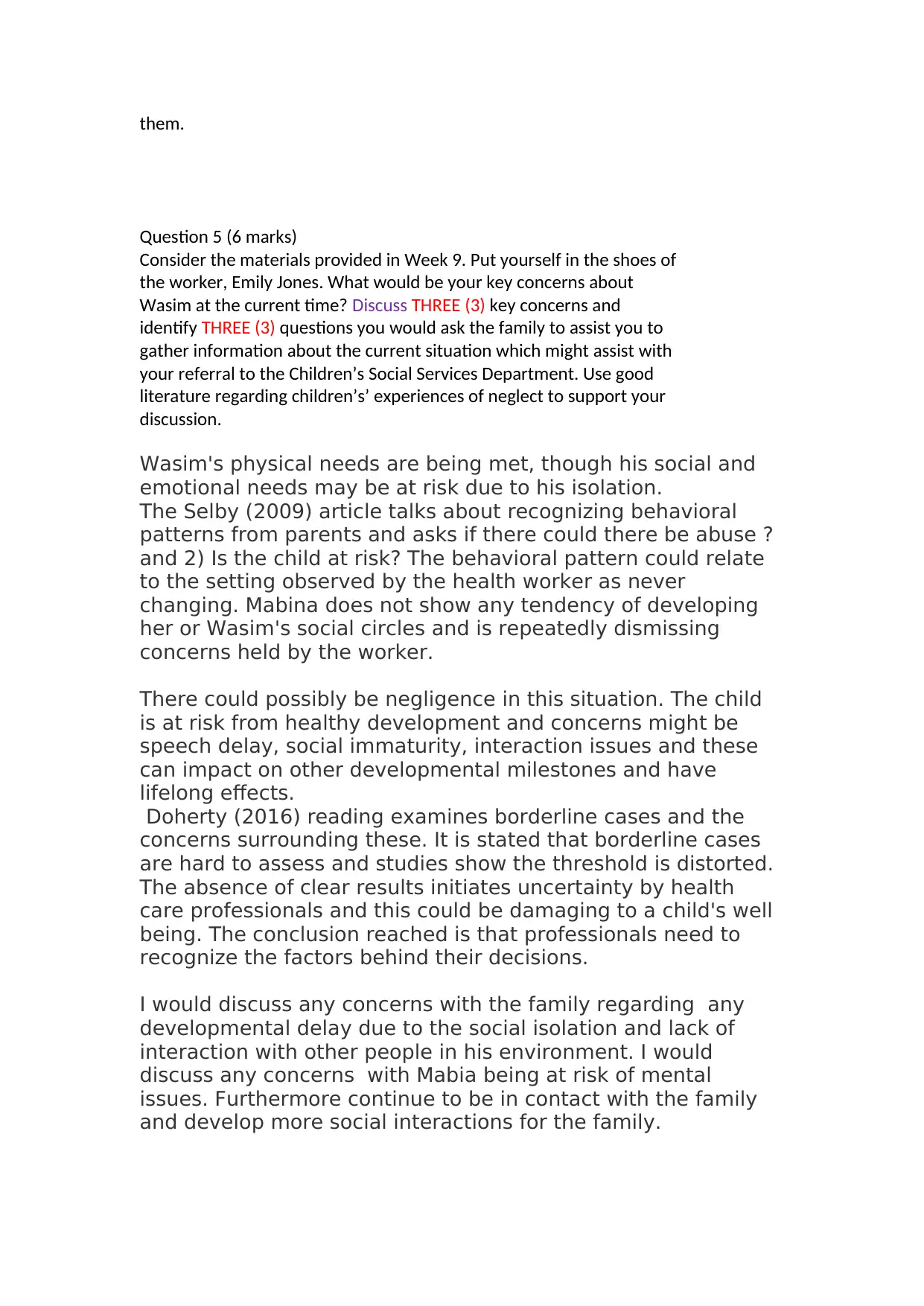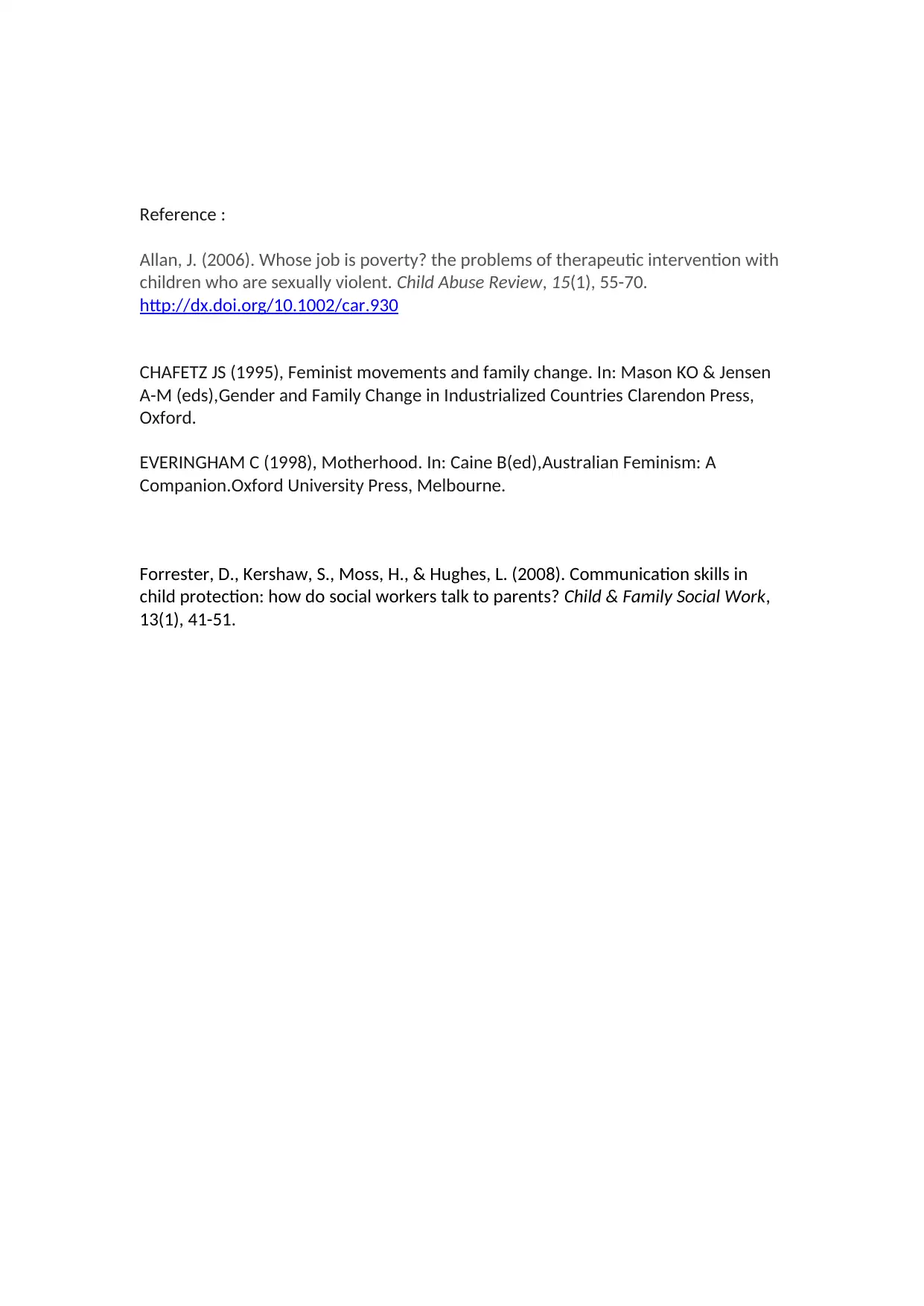The provided content discusses culturally sensitive social work practice and the importance of understanding clients' definitions of problems. It also highlights the need for skilled communication in child abuse and neglect cases. The key findings from Forrester et al (2007) show that there has been a lack of research on good communication skills, which can lead to negative outcomes such as high-profile child deaths. The study identifies three levels of practice: Level 1 (parent-focused), Level 2 (threshold competence), and Level 3 (skilled practice). Skilled practitioners are able to build positive relationships with parents despite difficulties, using effective communication skills such as empathy, reflection, and recognizing positives. In the context of Wasim's case, the worker would have key concerns about his social and emotional needs being at risk due to his isolation.
![[object Object]](/_next/static/media/star-bottom.7253800d.svg)
![[object Object]](/_next/static/media/star-bottom.7253800d.svg)




